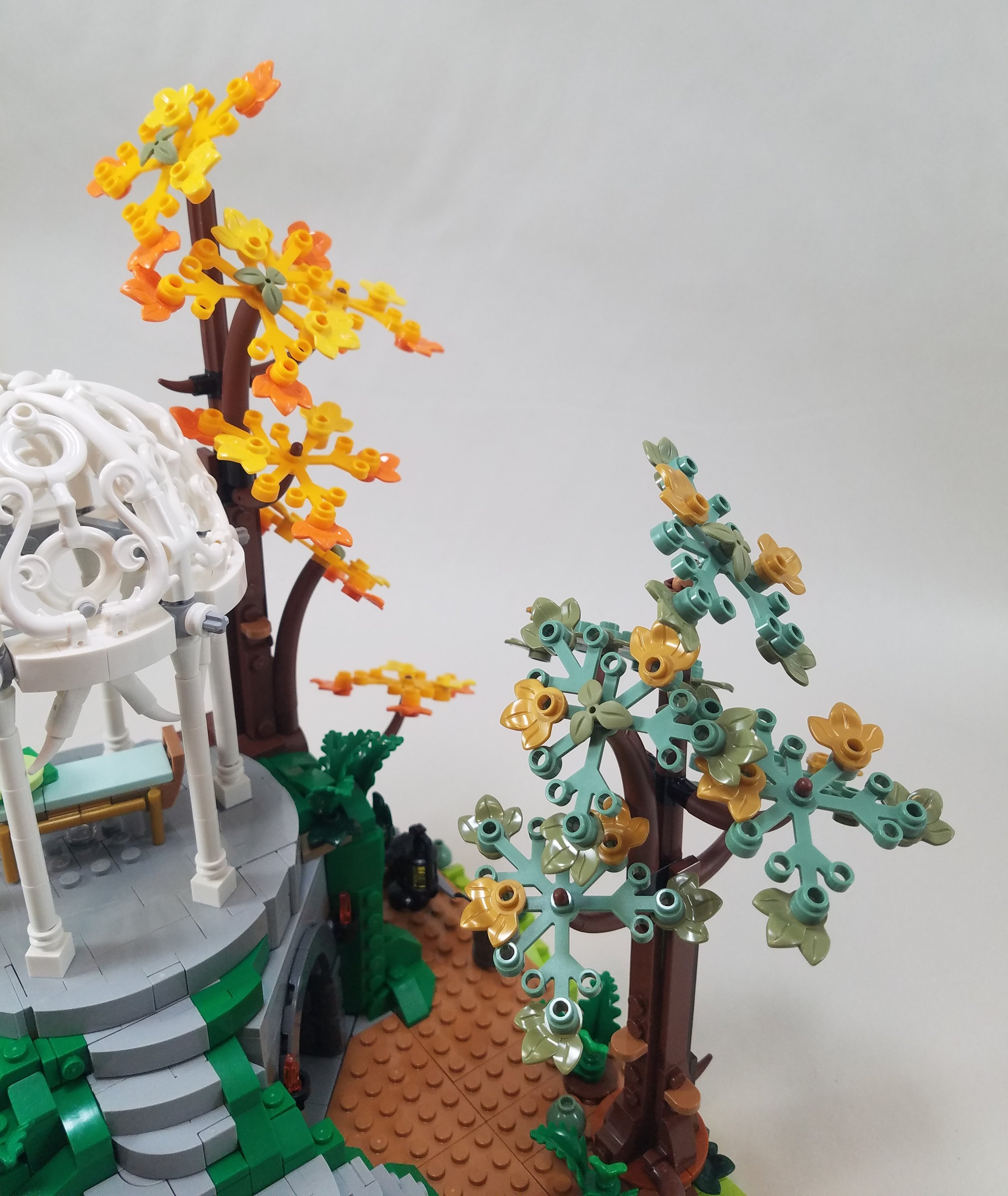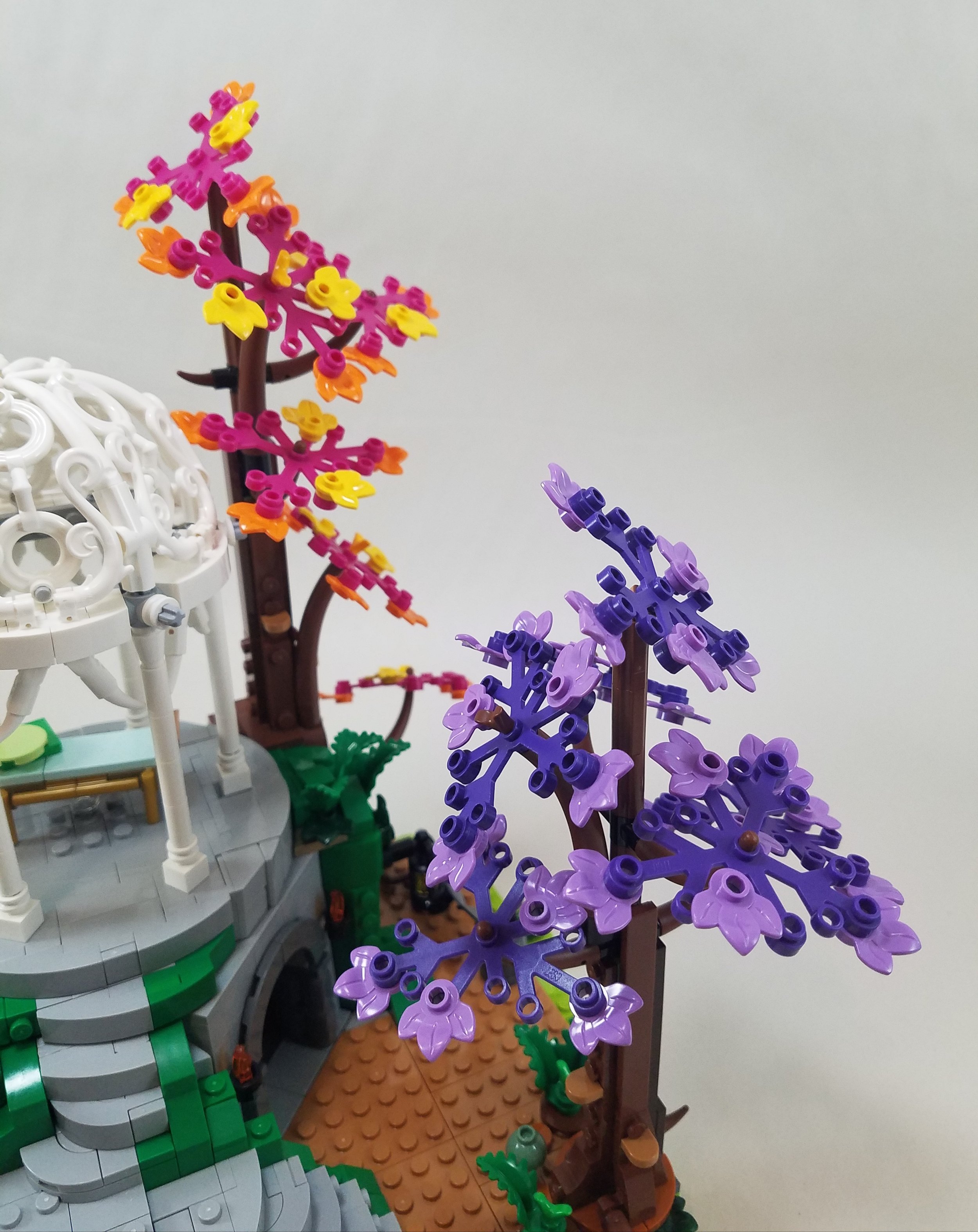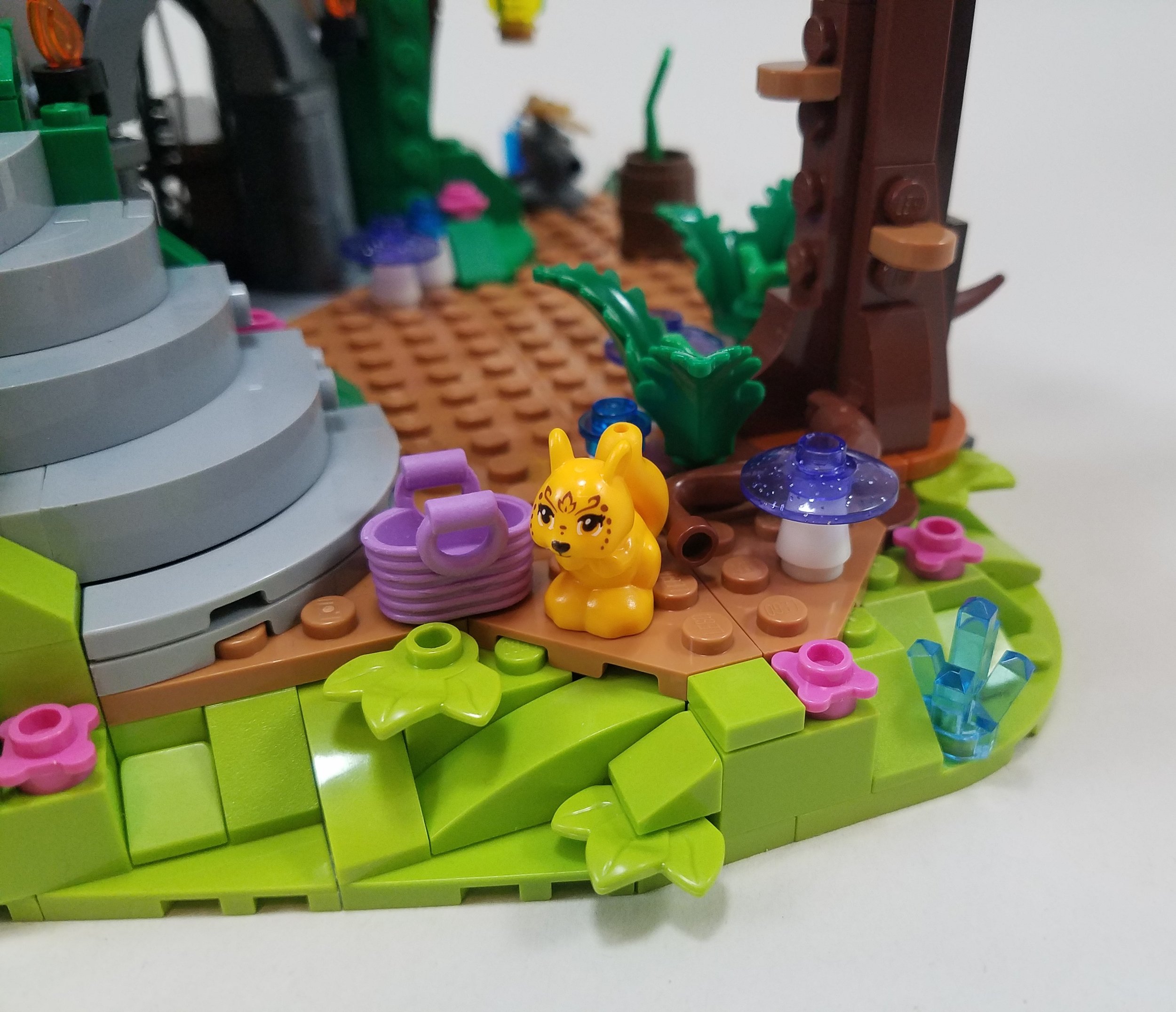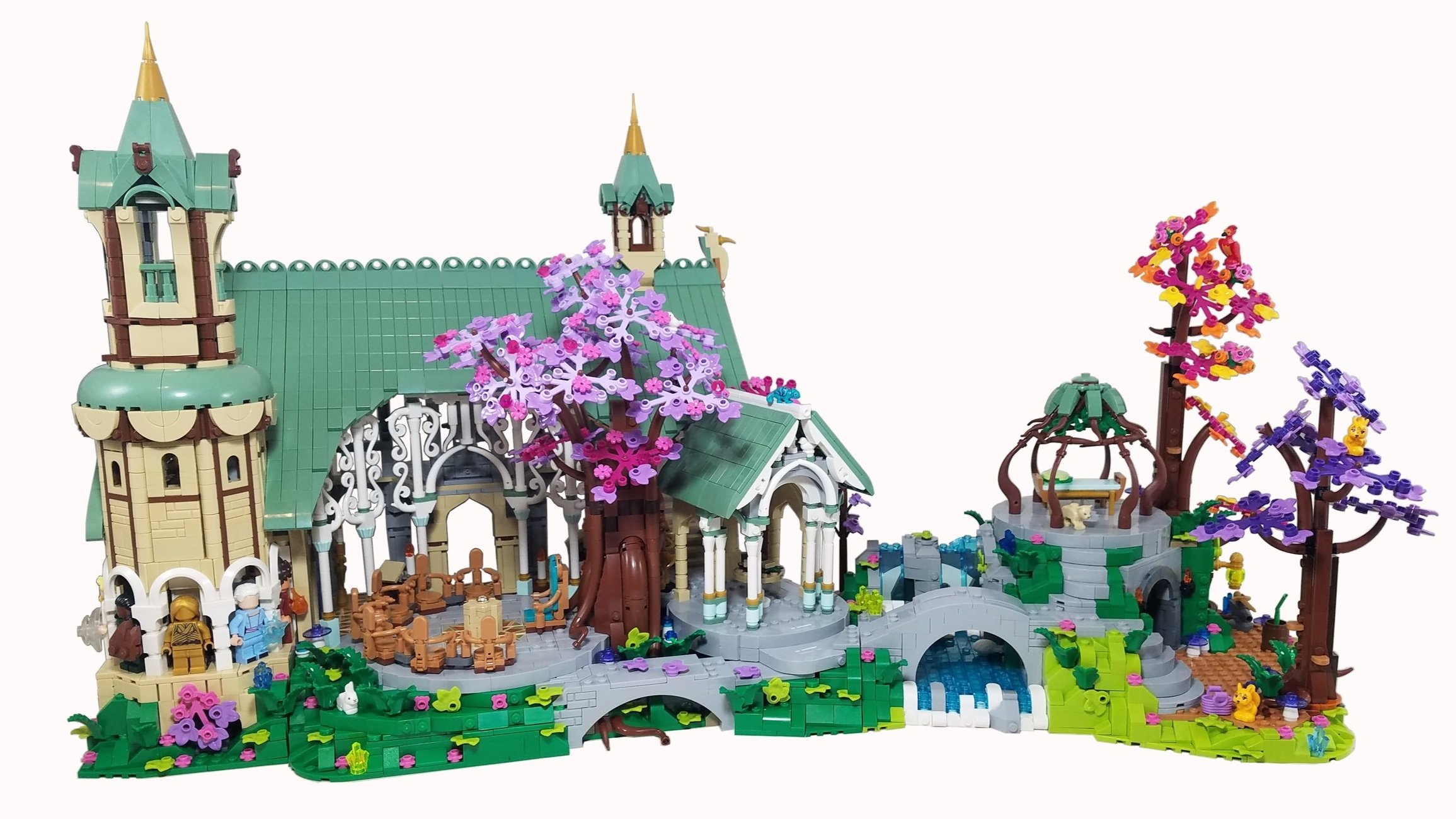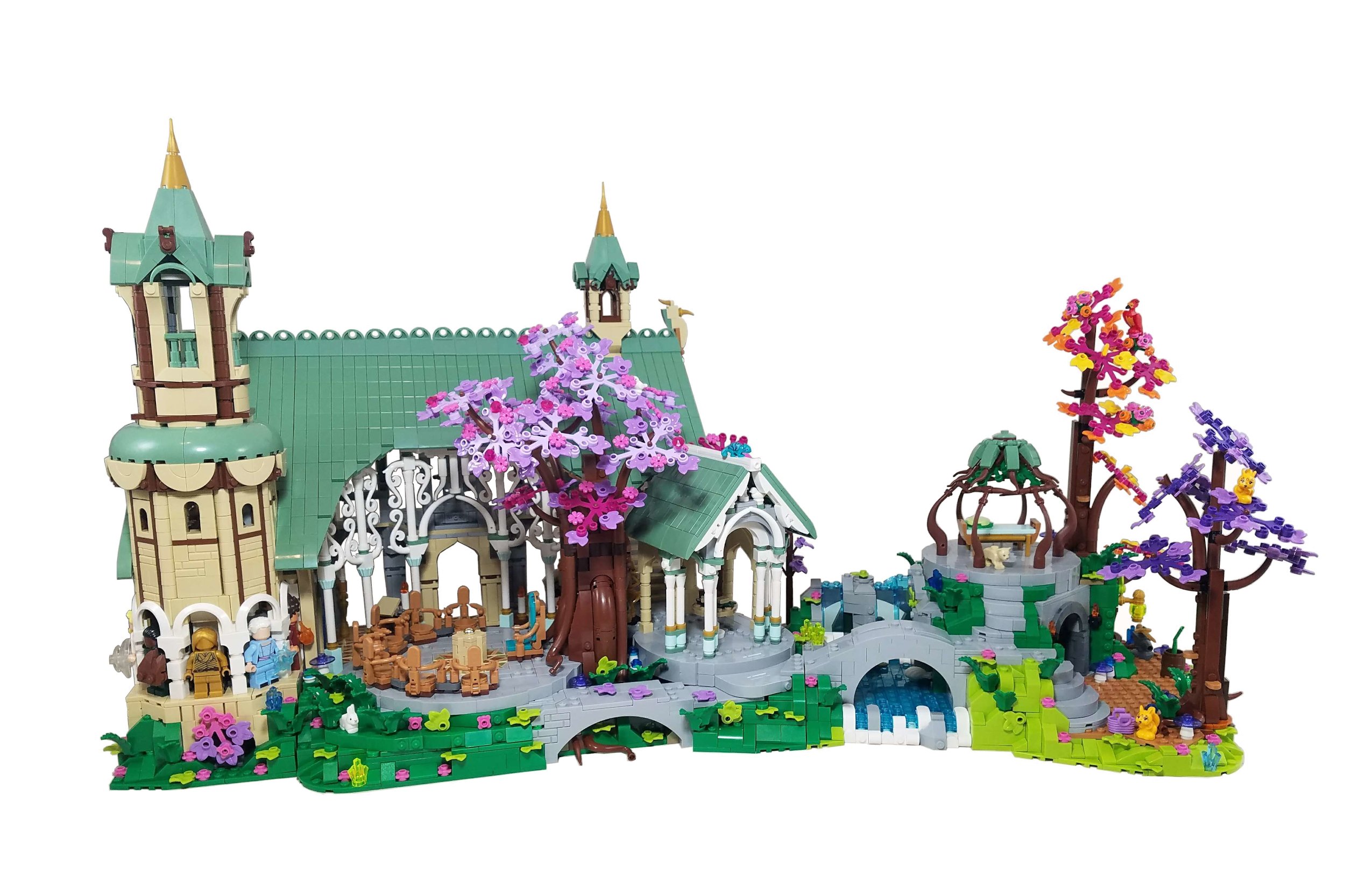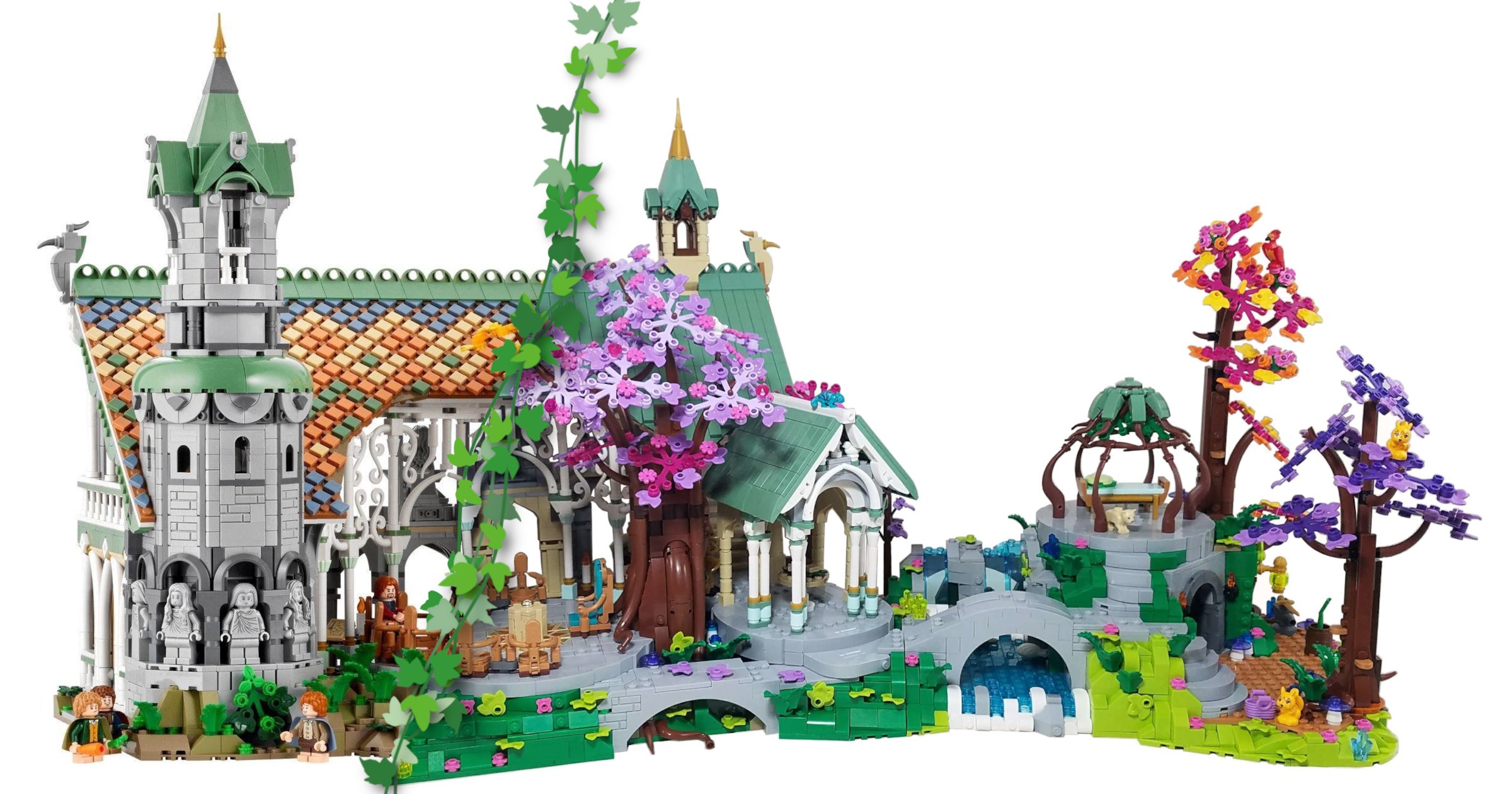An Ode to Elves: Remaking Rivendell in the Style of LEGO Elves
/As a huge (and I mean HUGE) fan of all things Middle Earth, I was ecstatic about LEGO’s return to this magical world with the announcement of 10316 Rivendell. After the appetizer that the three Lord of the Rings BrickHeadz released in January provided, it’s great to finally get a proper minfigure-scale set in the LOTR theme. And what a set it is!
However, while this 6,000+ piece set is jaw-dropping on its own, besting anything ever released under the LOTR brand, my inner MOC-builder felt the need to take the set a step further. After all, why just build Rivendell when you could build and modify Rivendell?
(If you wanted a play-by-play of building the set or a list of all the details hidden within, there are many other LEGO-related sites that do that quite well. At BrickNerd, we like to get creative with sets by showcasing their history, alternative potential, cultural impact and even absurdity.)
Rebuilding Rivendell
The decision to modify Rivendell was a relatively easy one. What was a little more challenging was the choice of just how exactly to modify it. Do I make a wintery version coated in snow? A steampunk version covered in gears and pipes? A ruined and decayed version from after the elves left Middle Earth? There were so many options. However, after some brainstorming and feedback from the BrickNerd team, I settled on… drumroll, please… Elves!
(A few AI-generated images from Craiyon depicting those alternate Rivendell prompts I mentioned just for fun.)
Now, you may be asking, “Doesn’t Rivendell already revolve around elves?” And the answer to that is yes, yes it does. However, I’m not talking about just any elves, but the one and only LEGO Elves theme. For those unfamiliar with the Elves line, it was a LEGO theme that ran from 2015 to 2018 and focused on Emily Jones and her quest to return home after getting trapped in a fantasy world of elemental elves and other magical creatures.
The focus on elves that is present in both Rivendell and the Elves theme made them seem like a natural fit for each other. Elves is also one of my all-time favorite themes alongside Lord of the Rings, so mashing the two together felt like a great tribute to both the return of Lord of the Rings and the legacy of Elves.
Elements of LEGO Elves
Before I dive into my modifications, though, I want to take a brief moment to look at a few sets from the Elves line and identify a few key features in them.
The first thing I want to point out is the elements that make up the ground. Most of the Elves sets use green to depict the grass, although lime green is also used on occasion. A mix of light bley and dark bley is used to depict rocks. Additionally, several common features can be seen decorating the ground in many Elves sets, including trans-purple mushrooms, crystals, and spots of lime green moss.
When it comes to foliage, the theme has a distinct and colorful palette. Reddish brown is the primary color used for wood, although both reddish brown and dark brown can be seen. The leaves tend to inhabit various shades of pink or purple and are often coated in flowers and gems. Speaking of flowers, these can also be found in abundance along the ground in a variety of colors, although shades of pink and purple are once again the most common colors for the flowers.
Finally, the buildings tend to be built in a Tudor style, using tan for the bulk and walls with brown and some other vibrant color as highlights. The roofs tend to be simple and smooth with curved edges. Additionally, the buildings are often heavily incorporated into their natural surroundings.
Elvesification of Rivendell
And now, with that out of the way, on to my modified Rivendell! Or should I say RivendElve? No, you’re right, I shouldn’t say that. That atrocious. Pretend I never said that. Anyways…
The first thing on my list of elements to change was the color of the ground. The grass in the massive set 10316 is primarily dark tan and olive green—which gives off a warm autumnal vibe that works great to capture Rivendell—but I wanted something a bit brighter for my Elvesification. The majority of the sets in the Elves line feature either green or lime green grass, so I used a mix of these throughout my modifications.
Luckily the official set is already divided into segments. The tower segment had the least grass, so I figured that was a good place to start switching the pieces out (sometimes with less than surgical precision). While I had to make some compromises as I didn’t have all the parts used in the set in green, it looked pretty good making the landscape more vibrant and lush. You can also see the contrast between the green and the original dark tan and olive green in the photos below, making it look like someone forgot to water the lawn.
Next, I turned my attention to the right-most section of Rivendell with the bridge and gazebo. I used lime green for the base of this section and normal green for some of the higher portions. This was done both to reflect the layers of grass color seen in several Elves sets and to conserve my collection of green parts—which at this point was beginning to run worryingly low. I thought the medium nougat ground worked pretty well with the lime green, so I kept that the same.
In addition to switching the banks of the river to green, I also added in quite a bit of light bluish gray to depict rocks, giving the area a bit more realism and less of the dark tan colors of the set.
Changing of the Seasons
After switching the ground in the middle portion section of the set, I was ready to move on to the foliage. One of the most notable parts of the Elves line was the colorful foliage—which was a game-changer at the time that the sets were released—so I knew I had to capture this essential aspect of the Elves aesthetic in my modified version of Rivendell. Also, I’m slightly obsessed with leaf elements, so I was excited to get a chance to employ some of the more oddly-colored leaves in my collection that I don’t normally get a chance to use.
I started with the central tree behind Elrond’s throne. I kept the layout of the branches and leaves the same, primarily just changing the colors. I also added several flowers onto the branches, as that’s another feature regularly seen in the Elves line. You can also see my attempt at changing the colors on the conifer in the back, although I ended up removing it entirely later on as it just didn’t match the Elves aesthetic.
Next up were the trees in the right segment around the gazebo. Again, I kept the original layout and relegated my changes purely to the color. The colors were fun to mess around with, and I’m especially happy with how the pink and orange tree turned out in the back.
Finally, I switched out most of the ground foliage throughout the set. The new fern pieces were just too cool and I didn’t have the heart to remove them, so they got to stay. (I’m sure if the Elves theme was ever rebooted, these ferns would make an appearance!) The rest of the foliage, on the other hand, I replaced with some more brightly colored equivalents to add a bit of levity to the surroundings. Here you can see a little bit of the contrast between the original foliage and my changes.
Elven Architecture
If you want to read about the actual Art Nouveau style of Rivendell, I suggest checking out Brick Architect’s review. But for my modding experiment, it was time to explore a different type of elven architecture.
I started with the gazebo on the right. While the original gazebo is incredible (and one of the hardest parts of the sets to finalize according to my chat with the set designers), it was a bit too elegant for the look I wanted. I replaced it with this curved wooden one, a style that can be seen throughout the Elves theme where the structures incorporate their natural surroundings and have a natural, organic feel. I sought to replicate that organic feel here.
My next order of business was changing the colors of the tower. A lot of the buildings in the Elves theme are built in a Tudor style with tan as the dominant color and reddish brown highlights for wooden framing, so I decided to incorporate that design language here as well. I did make the bottom section white, primarily due to the constraints of my parts collection but it could represent a marble foundation perhaps as opposed to the consistently grey tower from the set.
However, something was still off… the statues were still a bit too dull. After a bit of thought, I decided to replace those too. I ended up making several figures meant to represent the four elements featured in the Elves line (as well as a random golden figure in the middle because there was an extra spot and I had nothing better to put there). Maybe these statues are the original elemental elves or the founders of this settlement? You can use your imagination—I did!
After modifying the big tower, I also switched out the small tower on top of the roof in the central segment to match the style. I kept the sand green color because of my parts availability and it felt like it could belong in the Elves theme.
Razing the Roof
Next, I turned my focus to the roof. The original roof is absolutely stunning and completely unlike anything seen in a set before. The color pattern, geometry and techniques used to achieve the look are exquisite—I nearly left it as-is. Unfortunately, since I was trying to recreate an aesthetic that has been seen in sets before, I decided that the roof had to go. I ended up making a simple sand green roof using so many shingled sand green tiles, similar to the technique seen in many of the Elves sets, albeit at a much larger scale. I started by changing out the roof in the smaller tower segment. Below, you can see how the original roof compares to my modified version.
After doing the same thing to the rest of the roof in the central segment (whew!), I was almost done with my modifications. While all of the original modifications helped achieve that Elves aesthetic, finishing the roof is what really sold the effect for me. I finished the smaller roof of the entryway and left the white detailing to echo the base of the tower (and because my parts collection was close to being depleted).
After that, it was just a matter of scattering some final Elves-like details around the scene: mushrooms, accessories, crystals, and, of course, some various animals. Sadly the Elves characters I ordered on BrickLink did not arrive in time, but perhaps they can join the scene later to help it feel more lived in.
Rivendell of the Elves
With the Elvesification process complete (and my parts collection depleted), I present to you the finished product, an ode to elves! Here is Rivendell built in the LEGO Elves style.
Just like many other reviews, this set is so… photogenic. And the Elves variant is no different. I found myself looking at the details over and over.
I came to really enjoy the animals inhabiting Rivendell. Soon they will be joined by other elves (as soon as my packages arrive!) to populate this gorgeous location. I actually quite like the lush and vibrant coloring. If I ever revert this to the original set (starting with the roof), I might keep some of the other colors around.
I tried to recreate the photo using the exact same angle to showcase the changes (including too much time editing out the background), so here is a fading comparison of the original set with my Elves modifications for reference. It is almost like the seasons change before your eyes from spring to fall… maybe I’ll do a snowy version anyway to complete the cycle!
Reflections on Rivendell
The Lord of the Rings, and the broader world of Middle Earth, have always been hugely important to me. The rich world, characters, and themes have provided an endless source of entertainment, escapism, and inspiration to me over the years. Unfortunately, like many other newer initiates of the LEGO hobby, I missed out on the old Lord of the Rings and Hobbit lines, so a second chance at a Lord of the Rings set is an incredible opportunity for me and the many other LEGO LOTR fans out there. Personally, I can’t wait to see all the new Middle Earth-themed creations and discussions that this revival will spur.
When 10316 Rivendell becomes available on March 5th, many of us will excitedly build the set (and mourn the $500 missing from our wallets), cherish the minifigures we’ve always wanted, and put the completed model on a shelf for the next decade to be admired again and again. But I hope that this experiment in modding has shown that the large display sets LEGO has been producing recently can also be a canvas—a head start to celebrate your creativity, explore possibilities and unlock the designer within.
DISCLAIMER: This set was provided to BrickNerd by LEGO. Any opinions expressed in this article are those of the author.
Will you make any modifications to the LEGO Rivendell set? Let us know in the comments below!
Do you want to help BrickNerd continue publishing articles like this one? Become a top patron like Charlie Stephens, Marc & Liz Puleo, Paige Mueller, Rob Klingberg from Brickstuff, John & Joshua Hanlon from Beyond the Brick, Megan Lum, Andy Price, John A. and Lukas Kurth from StoneWars to show your support, get early access, exclusive swag and more.



















